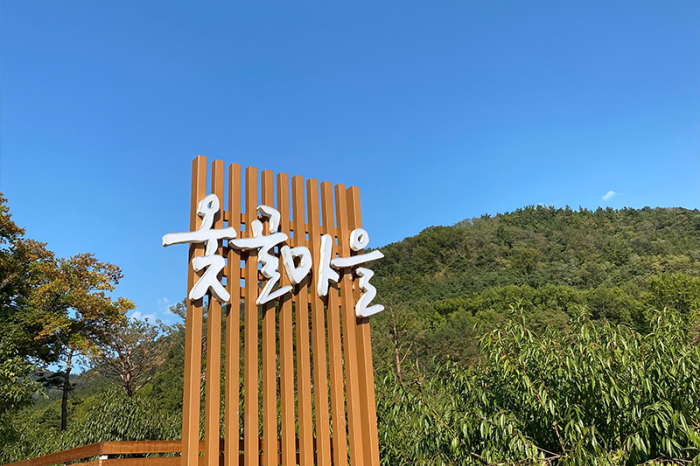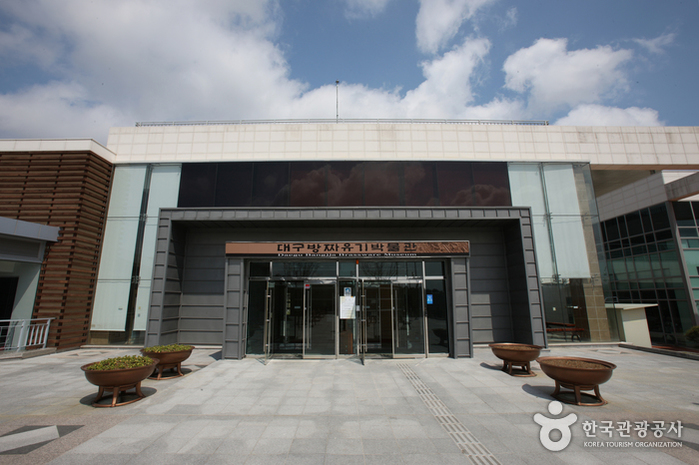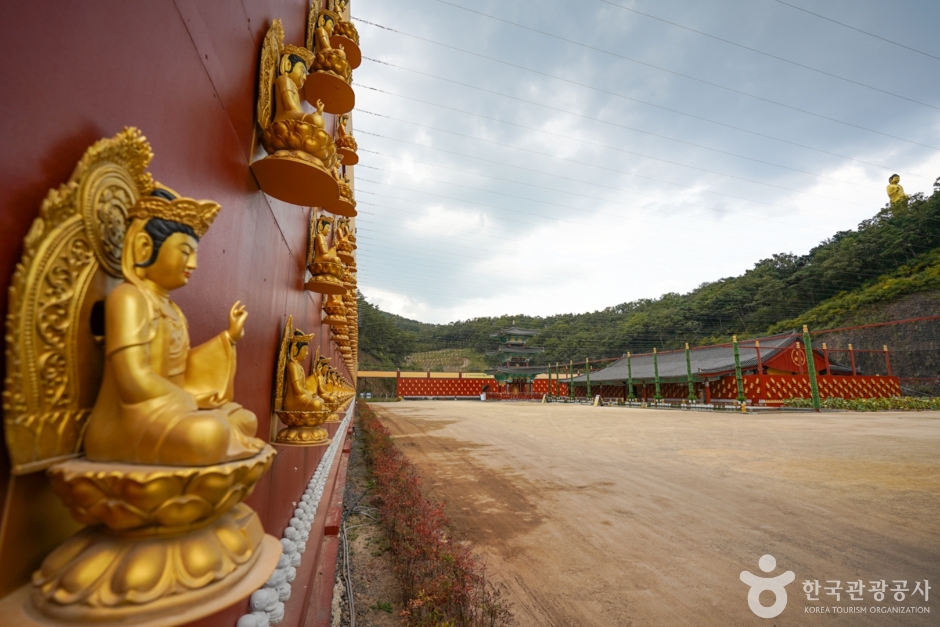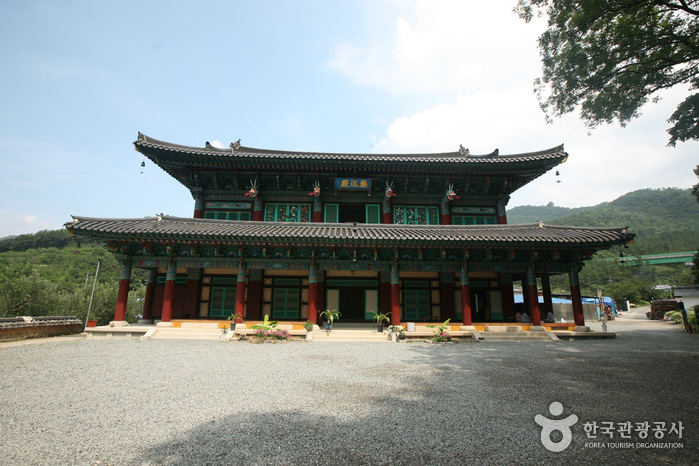Lotte Outlets - Daegu Yulha Branch [Tax Refund Shop] (롯데아울렛 대구율하점)
14.3Km 0 2024-04-23
80, Ansim-ro, Dong-gu, Daegu
-
The North Face - Lotte Yulha Branch [Tax Refund Shop] (노스페이스 롯데율하)
14.3Km 0 2024-04-23
80, Ansim-ro, Dong-gu, Daegu
-
Myeongpum Otgol 1616 Cooperative Society (명품옻골 1616 협동조합)
14.4Km 39352 2024-02-29
195-5 Otgol-ro, Dong-gu, Daegu
+82-53-983-1040
Myeongpum Otgol 1616 Cooperative Society is a village enterprise operating in the oldest Otgol Village in Daegu. Utilizing traditional hanok houses dating back 200 years, they offer hanokstay experiences, guided village tours, and various traditional Korean experiences such as Tea Confectionery Experience, Hanbok Experience, Village School Experience, Rice Cake Pounding Experience, Tuho (Arrow-throwing), Jegichagi, Biseokchigi. Visitors can also enjoy traditional beverages at the hanok café.
Pyeonggwang-dong Apple Village (평광동 사과마을)
14.5Km 0 2023-11-09
37 Dopyeong-ro 116-gil, Dong-gu, Daegu
Pyeonggwang-dong Apple Village is home to some 140 apple orchards. The village is located at the foot of Palgongsan Mountain, and has been growing apples for over 100 years, even creating a new apple, the Pyeonggwang honey apple. The village features many impressive trees, including the nation's oldest Hongok apple tree, a pine tree planted in honor of Korean Independence, and a large willow tree referred to as Filial Soon Gang Sunhang Tree. Many families visit in fall the enjoy apple picking.
Daegu Bangjja Brassware Museum (대구 방짜유기박물관)
15.0Km 14430 2019-03-19
29, Dojang-gil, Dong-gu, Daegu
+82-53-606-6171~4
Bangjja Brassware Museum is the first original museum of its kind in Korea. Unknown to many, Bangjja Brassware possesses a host of beneficial attributes and is used both for storing food and for growing plants. One of its primary functions is that of cultivating nutritive elements.
The Bangjja Brassware Museum in Daegu has numerous brassware products on hand that were generously donated by Lee Bong-Ju. His collection was subsequently appointed intangible cultural asset number seventy-seven by the Korean government.
The museum’s layout is rather intricate. Both the basement floor and second ground floor consist of three exhibit halls, a data research hall, a cultural experience hall, a video education hall, an outdoor stage, and several planning exhibit halls. In the Brassware Cultural Hall, a display boasting Korea’s history regarding various kinds of brassware, together with other relevant information is on hand for visitors. In the nearby Donation Hall, a National Intangible Cultural Heritage, Lee Bong Ju’s luxury brassware collection, is on display. In the Reappearance Hall there are makeshift displays illustrating where brassware was first produced and where it was traded.
Manbulsa Temple (Yeongcheon) (만불사(영천))
16.2Km 29516 2024-02-23
857-5 Goji-ri, Bugan-myeon, Yeongcheon-si, Gyeongsangbuk-do
Situated on Manbulsan Mountain in Yeongcheon-si, Manbulsa Temple is renowned for housing the largest collection of Buddha statues in Korea. The temple is also celebrated for actively promoting modern Buddhism, culture, and welfare. Notable features within the temple grounds include the towering 33-meter Yeongcheon Great Amitabha Buddha, the revered five Buddha's jinsin saris and Bodhi trees from Sri Lanka, the resonant Manbul Brass Temple Bell, and the main sanctuary, Manbulbojeon Hall. Nearby attraction include Dogyeseowon Confucian Academy, Dolhalmae Wishing Stone, and Nogye Sibi (Monument Inscribed with a Poem of Pak Inro), offering a rich cultural and historical exploration.
Gooam Farmstay Village (구암팜스테이마을)
16.2Km 53032 2024-03-15
8-1 Guam-gil, Dong-gu, Daegu
+82-53-984-5273
Known as "Gooam" due to its rock formations resembling turtle's shell, Gooam Farmstay Village offers various activities such as harvesting agricultural produce, traditional food making, traditional games, and craft experiences. Depending on the season, there are experiences like picking strawberries, digging potatoes, picking cherry tomatoes, gathering chestnuts, and harvesting persimmons. Visitors can also participate in making bean curd, rice cakes, kimchi, catching loaches, making kite, and experiencing hanji crafts.
Daegu Stadium (대구스타디움)
16.2Km 20230 2022-06-30
180, Universiad-ro, Suseong-gu, Daegu
+82-53-803-8300
Daegu Stadium is a sports stadium located in Daeheung-dong, Suseong-gu in Daegu. Construction of the stadium began on July 28, 1997 and was completed on May 20, 2001. Its roof is designed to resemble a globe, incorporating the beautiful curves found in the roofs of traditional Korean houses.
The stadium seats approximately 66,000 people and is suitable for hosting large-scale international sports games and 74% of the seats are protected by a Teflon-coated overhang. The 47,407 square meter stadium has three stories below ground and three above ground floors and is built on a 512,479 square meters of land just 9 kilometers southeast of the city’s downtown area.
Stadium facilities include a gymnasium, baseball field, indoor ice rink, horseback riding track, tennis court, fitness center, shooting range, archery range, skateboard park, and an indoor jogging course. There are smaller buildings for taekwondo, judo, and rock climbing.
Daegu Stadium has hosted a number of 2002 FIFA World Cup matches; Senegal vs. Denmark (June 6), Slovenia vs. South Africa (June 8), Korea vs. U.S.A. (June 10) and Korea vs. Republic of Turkiye (June 29).
Daegu Donghwasa Temple (동화사(대구))
16.3Km 71616 2023-11-14
1 Donghwasa 1-gil, Dong-gu, Daegu
Donghwasa Temple is located on the south side of Palgongsan Mountain, about 22 km northeast of Daegu. It was built by Monk Geukdal in the 15th year of King Soji’s reign (AD 493). The original name of the temple was Yugasa Temple, but Simjiwangsa rebuilt the temple under King Heungdeok (r. AD 826-836) and named it Donghwasa Temple, which means "the paulownia tree blooms even in winter," in reference to the blooming trees around the temple. Most of the present temple buildings were constructed between 1723 and 1732.
Daegu Gwaneumsa Temple (관음사(대구))
16.5Km 17933 2020-05-08
535, Dunsan-ro, Dong-gu, Daegu
+82-53-984-9940
Gwaneumsa Temple in Do-dong, Daegu is situated halfway up the rock face thickly wooded with Oriental Arborvitae. The Dalseong Forest of Oriental Arborvitae here has been enlisted as Natural Monument No. 1 of Korea. This forest, boasting several hundred years of history together with the temple, is admired as one of the ten best sceneries of Daegu.
![Lotte Outlets - Daegu Yulha Branch [Tax Refund Shop] (롯데아울렛 대구율하점)](http://tong.visitkorea.or.kr/cms/resource/35/2883835_image2_1.jpg)





 English
English
 한국어
한국어 日本語
日本語 中文(简体)
中文(简体) Deutsch
Deutsch Français
Français Español
Español Русский
Русский